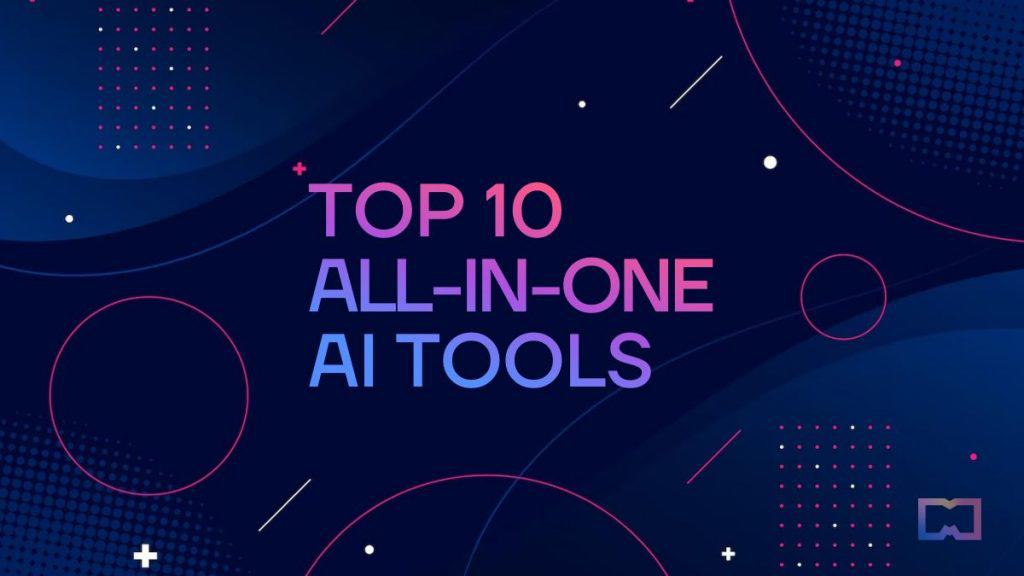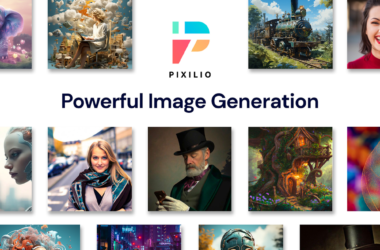All-in-one AI tools are designed to be easy-to-use, affordable, and accessible to users of all skill levels. They provide a suite of AI functionalities through a single platform or ecosystem. This eliminates the need to cobble together disparate AI tools and allows you to accomplish a wide range of tasks with minimal effort.

Benefits of All-in-One AI Tools
The main benefits of all-in-one AI tools include:
1. ChatGPT
Chat GPT is a natural language generation (NLG) system that can produce realistic and ChatGPT is an exceptional AI tool that has garnered significant attention and acclaim in recent years. Developed by OpenAI, it stands out as one of the most versatile and powerful natural language processing models in existence. This remarkable AI tool has revolutionized the way we interact with technology, making it an indispensable resource in various fields and industries.
At its core, ChatGPT is a language model built upon the GPT-3.5 architecture, which is a product of extensive deep-learning techniques. It excels at understanding and generating human-like text, which makes it incredibly useful for a wide range of applications. Whether it’s answering questions, generating creative content, or providing assistance in complex problem-solving, ChatGPT can do it all.
The impact of ChatGPT extends beyond the corporate world. It has proven invaluable in the fields of education and research, assisting students and scholars in their work. Furthermore, it aids individuals with disabilities by providing them with a means of communication and accessibility that was previously unavailable.
Key Features
Pros of ChatGPT:
Cons of ChatGPT:
Pricing:
ChatGPT offers a free trial version with some restrictions. For more features, you can upgrade to ChatGPT Plus for $20/month. If you want to access ChatGPT via an API, you will be charged $0.002 per 1,000 characters you produce.
2. Canva
Canva is a graphic design platform that makes creating professional visual content simple for anyone. The AI-powered design tools allow you to design graphics, presentations, documents, and more quickly. You can choose from thousands of templates or create your own designs from scratch. You can also collaborate with your team members and share your designs online or download them in various formats. Canva has a user-friendly interface that makes designing easy and fun.
Key Features of Canva:
Pros of Canva:
Cons of Canva:
Pricing:
Free version has basic features. Canva Pro is $12.95/month. Enterprise plans also available.
3. Zapier
Zapier is an automation tool that connects your apps and services together with AI-powered workflows called “Zaps.” It allows you to integrate and automate tasks between tools without coding.
Zapier automation platform
Key Features of Zapier:
For users with specific and unique automation needs, Zapier provides the flexibility to build custom Zaps tailored to their requirements. This feature allows for the creation of highly specialized and complex automation workflows. Users can incorporate filters, conditions, logic, and more to design workflows that precisely match their specific use cases.
Pros of Zapier:
Cons of Zapier:
Pricing:
Free version has 100 Zaps. Paid plans start at $19.99/month for unlimited Zaps.
Zapier is perfect for connecting systems like email, CRM, ecommerce, social media, storage, and more. It saves hours of manual busywork with automated multi-app workflows.
4. Mailchimp
Mailchimp is the ultimate email marketing platform powered by AI. It helps millions of users create, deliver, and track stunning email campaigns with ease. Whether you want to design beautiful newsletters, send personalized messages, or automate your email marketing, Mailchimp has you covered.
Key Features of Mailchimp:
Pros of Mailchimp:
Cons of Mailchimp:
Pricing:
Free for up to 2,000 contacts. Paid plans start at $9.99/month.
Mailchimp is the perfect email marketing tool for small businesses, ecommerce, agencies, and growing teams looking to communicate with customers and drive growth.
5. Wix
Wix is an AI-powered website builder used by over 200 million people worldwide to create customized websites. With Wix, you can build professional sites without coding.
Key Features of Wix:
Pros of Wix:
Cons of Wix:
Pricing:
Free basic plan. Unlimited plan starts at $12.5/month.
6. Ahrefs
Ahrefs is an SEO and content marketing toolkit used by many of the world’s leading brands. It provides powerful AI tools to optimize websites, perform keyword research, track ranks, and analyze competitors.
Key Features of Ahrefs:
Pros of Ahrefs:
Cons of Ahrefs:
Pricing:
Lite plan starts at $99/month. Standard plan starts at $199/month.
7. Shopify
Shopify is an AI-powered ecommerce platform used by over 1.7 million businesses to sell online, in stores, and across social media. The all-in-one solution provides everything needed to start, run, and grow a retail business.
Key Features of Shopify:
Pros of Shopify:
Cons of Shopify:
Pricing:
Basic Shopify plan starts at $32/month. Shopify Plus scales for larger businesses.
8. Grammarly
Grammarly is an AI writing assistant that helps you write clear, engaging, and error-free English. Whether you’re writing an email, a blog post, a resume, or a social media caption, Grammarly can help you improve your writing in real time. Grammarly uses AI to check your spelling, grammar, punctuation, clarity, engagement, and delivery, and offers suggestions to make your writing better. It also detects plagiarism and helps you avoid it.
Plus, Grammarly can generate content ideas for you based on your topic and audience. You can use Grammarly as a standalone app, a browser extension, or a smartphone keyboard. Grammarly works on various websites, applications, word processors, and email clients. Grammarly is the ultimate writing assistant for everyone who wants to communicate effectively in English.
Key Features of Grammarly:
Pros of Grammarly:
Cons of Grammarly:
Pricing:
Free basic version. Grammarly Premium plans start at $12/month.
9. Buffer
Buffer is an amazing social media toolkit for small businesses that helps them grow their audience online. Buffer allows users to schedule posts, analyze performance, and engage with their followers across multiple social platforms. Buffer also provides affordable, intuitive marketing tools for creating and managing campaigns, stories, and ads.
Whether you want to boost your brand awareness, drive more traffic, or generate more leads, Buffer can help you achieve your goals. Buffer is a values-driven company that empowers ambitious people and teams to succeed online. Buffer offers a free trial and flexible plans to suit different needs. Try Buffer today and see the difference it can make for your social media marketing.
Key Features of Buffer:
Pros of Buffer:
Cons of Buffer:
Pricing:
Free for up to 3 accounts. The pro plan starts at $6/month.
10. TensorFlow
TensorFlow is an open source machine learning platform that enables everyone to create, train, and deploy machine learning models for various applications. TensorFlow offers a flexible ecosystem of tools, libraries, and community resources that help developers and researchers build and share their work.
TensorFlow supports multiple languages, platforms, and devices, and can scale from small experiments to large-scale production. TensorFlow also provides tutorials, guides, and documentation to help users get started and learn more about machine learning.
Key Features of TensorFlow:
Pros of TensorFlow:
Cons of TensorFlow:
Pricing:
TensorFlow is a free and open-source software library for machine learning and artificial intelligence.
Comparison of Top 10 All-in-One AI Tools
FAQs
What are the main benefits of all-in-one AI tools?
Streamlining workflows, saving time, reducing costs, boosting productivity, enhancing creativity, data-driven decisions, better customer experiences.
How to choose the right all-in-one AI tool?
Consider your use cases and priorities. Review key features, pros/cons, and compare capabilities. Evaluate ease of use, integrations, and pricing.
What skills do I need to use AI tools effectively?
Domain knowledge in data, marketing, writing, design, etc. Understanding limitations. Ease of use for non-technical users.
What are the risks of relying on AI tools?
Overreliance on automation. False confidence in capabilities. Lack of human validation. No transparency into outputs. Security considerations.
Conclusion
Harnessing all-in-one AI tools can provide a powerful boost to your productivity, creativity, and performance. As this comprehensive guide demonstrated, today’s leading multipurpose AI platforms make it easier than ever to incorporate artificial intelligence into your work and workflows.
Source: mPost







